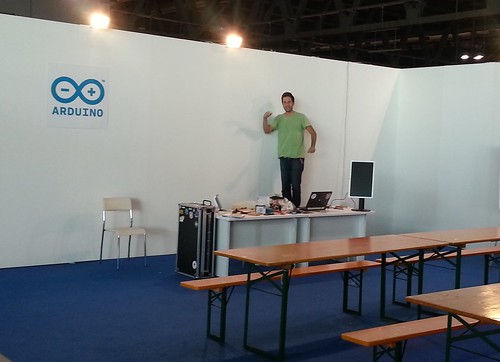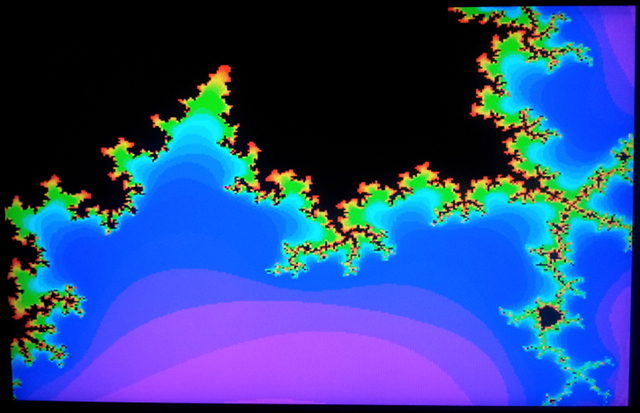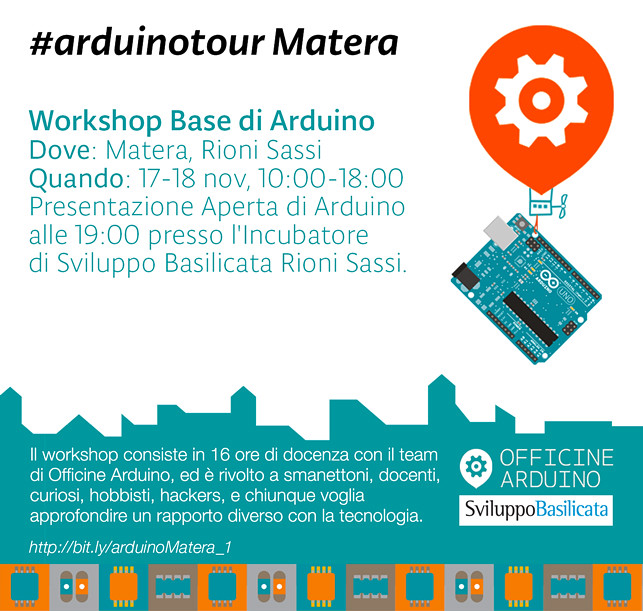ARDUINO 1.0.2 RELEASED W/ SUPPORT FOR THE MICRO, WIFI SHIELD, AND STARTER KIT.
– November 8th, 2012

To accompany the new Arduino Micro, we’ve released a new version of theArduino software, Arduino 1.0.2. This release also includes the WiFi library (for the WiFi Shield) and the examples for the Arduino Starter Kit. In addition, it contains many bug fixes and improvements, detailed in the release notes. In particular, it addresses many small incompatibilities between the Arduino Leonardo and other boards, which should ensure that the Micro also performs well (since it shares the same Atmel ATmega32U4 processor as the Leonardo).
You can download the software from the Arduino website.
NEW ARDUINO MICRO AVAILABLE
– November 8th, 2012
We’re happy to announce the release of the new Arduino Micro board.
The Arduino Micro packs all of the power of the Arduino Leonardo in a 48mm x 18mm module (1.9? x 0.7?).
It makes it easier for makers to embed the Arduino technology inside their projects by providing a small and convenient module that can be either used on a breadboard or soldered to a custom designed PCB.
The Micro has been developed in collaboration with Adafruit Industries, one of the leaders of the Maker movement. Adafruit is already developing a series of accessories for the new board that will complement its power and simplicity.
Throughout the month of November the product is available exclusively from Adafruit online and Radio Shack in retail stores.

Main features of Arduino Micro:
- The Arduino Micro is a microcontroller board based on the ATmega32u4.
- Like its brother the Leonardo board, the Arduino Micro has one microcontroller with built-in USB. Using the ATmega32U4 as its sole microcontroller allows it to be cheaper and simpler. Also, because the 32U4 is handling the USB directly, code libraries are available which allow the board to emulate a computer keyboard, mouse, and more using the USB-HID protocol.
- It has 20 digital input/output pins (of which 7 can be used as PWM outputs and 12 as analog inputs), a 16 MHz crystal oscillator, a micro USB connection, an ICSP header, and a reset button. It contains everything needed to support the microcontroller; simply connect it to a computer with a micro USB cable to get started.
- This allows the Micro to appear to a connected computer as a mouse and keyboard, in addition to a virtual (CDC) serial / COM port.
Technical specifications:
- Microcontroller: ATmega32u4
- Operating Voltage: 5V
- Input Voltage (recommended): 7-12V
- Input Voltage (limits): 6-20V
- Digital I/O Pins: 20
- PWM Channels: 7
- Analog Input Channels: 12
- DC Current per I/O Pin: 40 mA
- DC Current for 3.3V Pin: 50 mA
- Flash Memory: 32 KB (ATmega32u4) of which 4 KB used by bootloader
- SRAM: 2.5 KB (ATmega32u4)
- EEPROM: 1 KB (ATmega32u4)
- Clock Speed: 16 MHz
ARDUINO A ROBOTICA 2012
– November 7th, 2012

Anche quest’anno Arduino partecipa a Robotica – mentre non partecipa Makersitaly! – e ha scelto il mezzo della stampante termica in controtendenza con i mille volantini, flyer, cataloghi, allegati, biglietti da visita e tutta la montagna di carta che avrete nelle tasche alla fine dei tre giorni – giovedì venerdì e sabato – della manifestazione.
Siamo ad Impatto Zero, quindi non esageriamo neppure con la carta!
WEIRD EYE ROBOT WITH THE ARDUINO STARTER KIT
– November 6th, 2012
It reacts differently when you ‘pet’ it and ‘poke’ it. Beware when it ruffles its brow! It enjoys singing short jingles. Rumour has it that the light up googely eye can peer into your soul.
source [Robotgrrl]
PUSH CONFERENCE IS APPROACHING
– November 6th, 2012
We advice most of our readers interested in interaction design & creative coding willing to network in this field to give a look at the Push Conference, held at the end of this month in Munich.
push.conference is a unique two-part event for the interactive field. push.ux connects designers and developers of outstanding user interfaces, while push.inspiration unites creative coders and designers experimenting with innovative technologies.
via [Push Conference]
ARDUINO DUE VGA SIGNAL OUT
– November 5th, 2012
Photo credit: [Stimmer] on the Arduino Forum
[Stimmer] on the Arduino Forum hardcoded a way to display 160×240 (320×240 after some posts) VGA signal.
After working out how to do a timer interrupt I’ve had a go at making a VGA framebuffer. It is rather low-res at present(160×240) and fuzzy but I hope to be able to improve that. It has 8-bit colour (RRRGGGBB).
I cannot get Eagle to run right now so will have to describe the schematic in text:
Due pin 2 -> VGA pin 13 (HSync)
Due pin 3 -> VGA pin 14 (VSync)Due pin 25 -> 820R resistor -> VGA pin 3 (blue)
Due pin 26 -> 390R resistor -> VGA pin 3 (blue)Due pin 27 -> 2k2 resistor -> VGA pin 2 (green)
Due pin 28 -> 1k resistor -> VGA pin 2 (green)
Due pin 14 -> 470R resistor -> VGA pin 2 (green)Due pin 15 -> 2k2 resistor -> VGA pin 1 (red)
Due pin 29 -> 1k resistor -> VGA pin 1 (red)
Due pin 11 -> 470R resistor -> VGA pin 1(red)Due pin GND -> VGA pins 5,6,7,8,10
Via [Arduino Forum]
MASSIMO SU WIRED (CON LA CHIAVE INGLESE!)
– November 5th, 2012
Chi di voi fosse interessato ad approfondire il discorso #makers italiani ha un mese di tempo per entrare in possesso del numero di Wired in edicola: Re-Made Italy.
In copertina campeggia il Massimo nazionale con una chiave inglese, strumento che evidentemente non usa da anni ma che evoca il mondo dello smanettìo / making più del saldatore a stagno (quello sì, lo usa).
Wired – oltre a fare un bel ritratto dell’uomo ha dedicato un piccolo reportage ad Officine Arduino e a Fablabtorino. Interessante l’approfondimento sul futuro del lavoro, tema a noi estremamente caro.
Via [Wired.it]
SAVE THE DATE! ARDUINO WORKSHOP A MATERA #ARDUINOTOUR
– November 2nd, 2012
Come sapete stiamo portando un workshop di Arduino in giro per l’Italia. Siamo stati a Roma un po’ di tempo fa e ora é il turno di Matera. Sviluppo Basilicata, oltre ad avere sistemato parte dei Sassi trasformandoli in un incubatore di impresa, si é spesa per rendere il workshop possibile (avete capito bene, il workshop si terrà nei mitici Sassi di Matera!).
Se vuoi darci una mano a promuovere il workshop nella tua città scarica il volantino cartaceo! Vi invitiamo tutti quanti a partecipare alla presentazione del workshop e di Arduino il venerdì 16 Novembre [Iscriviti all'Evento Facebook]
Il Workshop é in vendita sullo store di Arduino.
DRIVE A DC MOTOR WITH ARDUINO DUE
– October 31st, 2012

We are proud to show you a tutorial about using an Arduino Motor Shield with the Arduino Due. This example shows the simplest thing you can do: driving a DC motor forward and backwards.
Read on the [tutorial]
THE COMING CIVIL WAR OVER GENERAL PURPOSE COMPUTING
– October 30th, 2012
This enlightening article (talk) by Cory Doctorow appeared on BoingBoing last August. This is not (only) a must-read in terms of imaging our near future, but an interesting way to weight the importance of the moral meaning Open Source Hardware has in real terms. Happy reading (or listening)














0 comentarios:
Publicar un comentario